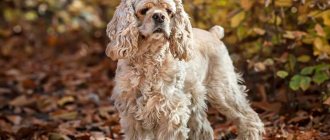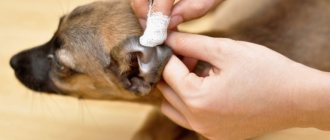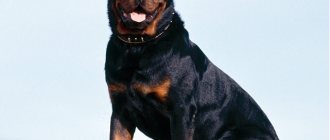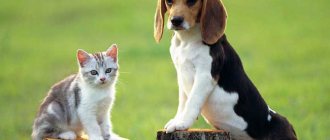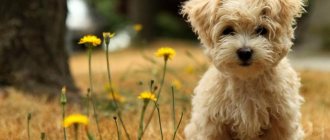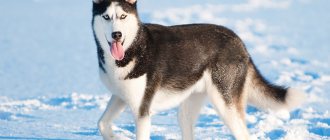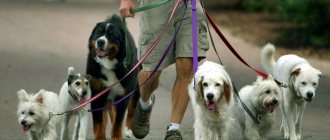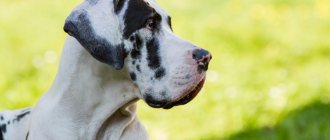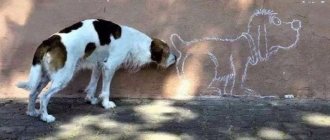Pros and cons of breeds grouped by the presence of coat
Hairless (hairless) dog breeds are most widespread not only because of their exotic appearance, but also because of the lack of a specific dog smell. The advantages of this breed include:
- hypoallergenic;
- no odor;
- exotic, unusual look;
- do not shed;
- do not suffer from fleas;
- they have a warm body.
The disadvantages of hairless dogs include:
- skin vulnerability to damage and pollution during a walk;
- sweat glands are located throughout the body; when a dog sweats, the skin may still emit an unpleasant odor;
- the fat secreted by the skin mixes with dust and remains on all surfaces that the animal touches;
- It is necessary to have insulated clothing during the cold season;
- the use of protective creams during the hot season;
- use of moisturizers due to dry skin;
- the need for regular hair removal of hair growing in the wrong places.
Popular representatives of this group of dogs are the Mexican and Peruvian Hairless, Chinese Crested, and American Hairless Terrier.
Breeds with long hair without undercoat
Features of these breeds: the guard coat is as similar as possible to human hair. The advantages of these breeds include the following details:
- Lack of undercoat, which is usually a source of odor.
- Hypoallergenic.
- No shedding.
The disadvantages include the following features:
- Due to its structure, wool is able to absorb environmental odors, which are not always pleasant.
- The need for frequent bathing. With rare bathing procedures, the fur can emit accumulated unpleasant odors, although different from the smell of a dog.
- After water treatments, the wool requires drying to avoid colds for your pet.
- Careful grooming is required.
The most famous representatives of this group are Yorkshire terriers, Maltese, and Shih Tzu.
Short-haired with a hard coat without undercoat
The advantages of the group include:
- ease of hair care.
The disadvantages include:
- shedding once or twice a year;
- shedding a small amount of fur throughout the year.
Representatives of this group are basset hounds, dachshunds, and Dobermans. Dogs whose habitat is the southern regions also have such hair.
Breeds with short or long hair, but without undercoat
The advantages of such breeds include:
- hypoallergenic;
- due to the lack of undercoat, there is no constant loss of fluff;
- no shedding.
The disadvantages of these breeds include:
- careful care of the coat is necessary: combing, cutting (to prevent shedding);
- Frequent bathing is required.
This group includes the Irish water spaniel and poodle. The recently bred breeds also have excellent qualities: Labradoodle (Labradoodle) and Cockapoo (Cocker Poodle).
Let's take a closer look at the brightest and most recognized representatives of each group.
Signs of an odorless breed
Pets that will not smell have similar characteristics.
The first group includes hairless dogs without fur. With proper care there will be no odor, but you will need to pay a lot of attention to caring for your pet's skin. Unprotected by wool, it quickly gets dirty, suffers from excess sunlight and frost.
- The Chinese Crested Dog is an ideal companion for a lonely person. Their owners are captivated by their extraordinary friendliness and devotion.
- Mexican Hairless Dogs are very calm in the apartment and moderately active on walks. They choose the only owner in the family, are easy to train, and treat all family members with great respect.
- The American Hairless Terrier is a cheerful playful dog, an excellent friend for an active person. It will be a pleasure to run with your child both on the street and in the apartment. Very friendly and non-conflicting.
The second group includes dog breeds without undercoat. They have long hair, the structure of which is similar to human hair, they do not shed and do not stink due to the lack of undercoat, on which fatty secretions of other dogs settle and emit an unpleasant odor when wet. But this does not mean that the guard coat does not need to be looked after; it also needs to be kept clean and dried after bathing.
- The Yorkshire Terrier is the most popular of the non-shedding breeds. Beautiful, funny Yorkies will bring their owners a lot of positive emotions.
- The Biewer is a relatively new breed, a close relative of the Yorkie. Compared to Yorkshire Terriers, they are calmer and more balanced.
- The Maltese is one hundred percent a “room” dog. Its purpose is to lie on a soft pillow or on the owner’s lap and receive affection with incredible dignity. But in turn, lap dogs respond to their owner with devotion and love.
- Shitzu - these dogs are a little larger in size than the previous ones and you can no longer carry them in your arms on the street. Representatives of this breed are quite calm and are perfect as a companion for a lonely pensioner.
Interestingly, non-shedding dogs are considered hypoallergenic. Unfortunately, this is just a myth. If such a dog has health problems, most likely the smell will also appear.
Chinese Crested
The most sought after breed, which can be completely hairless or with hair only on the tail, paws and head.
The best friend for the owner, has a friendly and sociable disposition. But if necessary, despite its diminutive size, it behaves like a guard dog.
When caring for your skin, it does not require regular use of creams: moisturizing and sunscreen.
To maintain the dog's hair in accordance with the standard, regular hair removal is required, especially in the muzzle area, which periodically becomes overgrown. The owner will have to use grooming services or independently master cosmetic tweezers and other hair removal products. It must be remembered that your pet must be accustomed to such procedures from puppyhood.
Breeds "without smell"
There are a number of "no smell" dogs. Basically, these are short-haired animals without undercoat or dogs without hair at all. There are also some long-haired dog breeds that do not smell like dog.
Among the hairless animals that do not smell like dog are the Chinese Crested and the Mexican Hairless. They have almost no fur, and therefore have virtually no odor. But such animals often require more troublesome care than others. They need regular hair removal and skin care in summer and winter. In the cold season, such pets need special clothing, and when it is hot, they need to be protected from the sun with the help of protective creams.
Short-haired dogs that do not smell are terriers. Their fur is quite tough, so it does not get wet and does not absorb odor. There are also long-haired dogs that do not smell like dogs. These breeds include Yorkshire terriers. Due to the structure of their fur, similar to human hair, they do not have a specific dog odor. But this brings up another problem: wool absorbs environmental odors. Therefore, the animal must be bathed regularly—literally once a week—as well as its fur dried and combed.
As you can see, dogs that don’t smell like dog require more careful and regular care from the owner. Therefore, when choosing a four-legged friend, pay attention to this and decide for yourself whether you will have enough opportunity and time to provide your pet with quality care.
American Hairless Terrier
Breeding of this breed began in America in the second half of the twentieth century. This was facilitated by the appearance of an unusual hairless puppy among rat terriers. The Hairless Terrier's hair consists of eyebrows and mustaches. The breed is distinguished by spotted skin, which has a certain resistance to ultraviolet rays and sub-zero temperatures.
Dogs are very active and require long walks and exercise. The character is friendly and sociable. Curious and easy to train.
Yorkshire Terrier
Belongs to the group of long-haired dogs without undercoat. These are smart and cheerful pets. Dogs are easy to train, friendly to other pets, and very attached to their owner. It is necessary to train and educate a dog from the first days of its arrival in the house. Strictness will be required when training, although it is not easy to apply it to a puppy that looks like a living toy.
The peculiarity of the Yorkie is that he does not value himself as a small dog. This can lead to waywardness of character, extraordinary (for his size) courage, masculinity and independence. This is a vigilant watchman and a good companion. The breed is distinguished by good health, which allows pets to live up to 20 years.
Dachshund
This breed is a short-haired dog without undercoat. Small in size with a long body and beady black eyes, the dachshund is a favorite of many families.
This is an energetic, unpretentious breed, capable of being willful. She is easy to train, has an artistic streak, and easily masters the “standing up” technique, especially when it comes to giving her a treat.
With proper care and selection of shampoo, your dog will not smell. With frequent water procedures, he feels uncomfortable and tries to acquire more smells on walks by lying around in some heaps.
This breed is distinguished by its delicate nature: dachshunds do not like to be shouted at, but they react positively to a gentle voice, intimate conversations and even reproaches.
Dog breeds without odor
West Highland White Terriers
These pets are attractive with a thick, two-layer coat. The upper cover is more rigid and resistant, and the lower one is pleasantly soft, which protects from the cold. Such dogs require careful combing and cleaning to prevent the formation of tangles. They are very friendly and wonderful companions.
Poodle
A breed of dog that needs careful coat care. Does not fade and has no smell. To care for curly beauties, you need to actively use a brush or seek help from a pet hairdresser. They do not shed noticeably, and are perfect for those who do not tolerate lost hair around the apartment.
Chinese Crested
This breed also belongs to a number of animals that do not shed and have no odor. In appearance it looks like a tiny horse. It was first developed in China, where it symbolizes mutual understanding and peace in the home. There is almost no vegetation on the body of this dog, the body is bare, only the head and limbs have long fur.
Basenji
Rated non-shedding and odorless. The dog is an inveterate hunter and just a pet. Short hair, very little shedding. Reliable, cheerful and positive. One of the species that does not bark.
Schnauzer
A dog is a hunter and a devoted friend. Even with such dense fur, they shed little. Having such external cuteness, they are always ready to protect their owner. They soon get used to the family and are very scrupulous. You need to train such dogs from an early age so as not to end up with a disobedient dog.
Basset Hound
This is another representative of the short-haired breeds, has a smooth and dense coat. Basset Hounds have a distinctive appearance: long floppy ears, excess skin on the head, large sad eyes and short legs.
This hunting breed has endurance and loves long walks. Training must begin from early puppyhood, as pets are prone to stubbornness. A thinking dog: if she is interested, she will follow commands. When offended, he may show disobedience.
The character is good-natured and friendly. The dog is affectionate, gets along well with children, and behaves with them like a guard.
Bassets are responsible and loyal, so they are often used as a watchdog. The pet has a loud voice.
To avoid odor, bathing should be done at least twice a month with a specially selected shampoo. The dog should be accustomed to water procedures from puppyhood, since such procedures are not to the pet’s liking.


